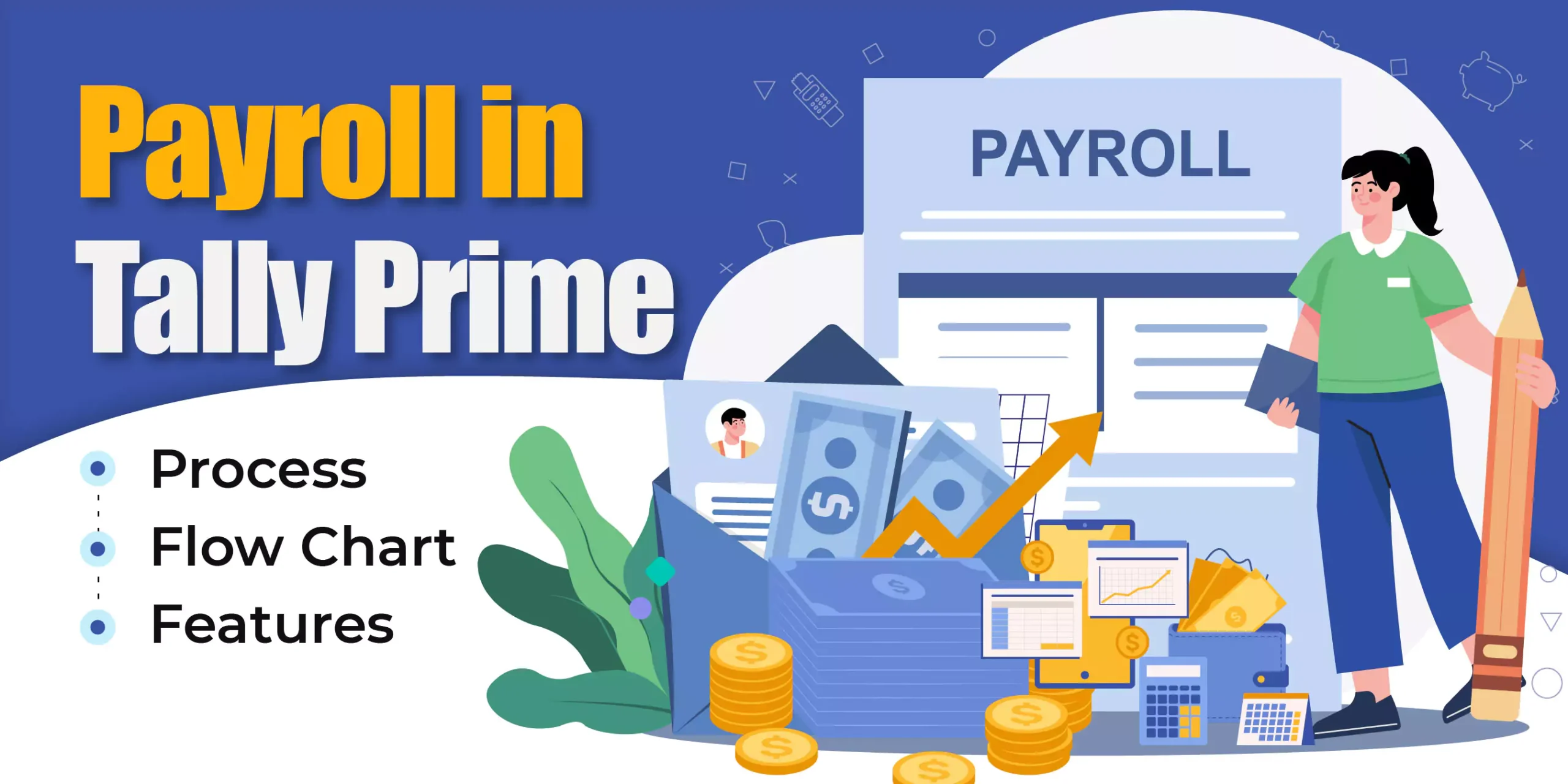
Multi GST in TallyPrime: Effortless Multi GST Handling
In today’s complex business structure, where most companies serve in different states or deal with varying product types, they have to work with multiple GSTINs. To make the process easy for businesses with multi GST, Tally Prime introduced the feature of multi GST in Tally Prime.
Tally Prime is the most powerful accounting software that is used for managing financial operations, accounting, taxation, and payroll processing. In this guide, we are going to explain to you the step-by-step process of generating multi-GST in TallyPrime 3.0, its importance, and a real-life case scenario of handling multi GST in TallyPrime.
This article will clear all your doubts related to the activation of multi-GST in TallyPrime and help you operate the business smoothly.
Table of Contents
-
- What is the Multi-GSTIN functionality in TallyPrime?
- The importance of Multi-GSTIN functionality in TallyPrime
- Enabling Multi-GSTIN in TallyPrime: A Step-by-Step Guide
- Manage Multiple GST Registrations in Tally Prime
- Case Scenario: Multi-GSTIN Implementation in Tally Prime
- Steps to implement Multi GST in Tally Prime
- Conclusion
What is the Multi-GSTIN functionality in TallyPrime?
GST: GST is a unique identification number allotted by the government of India to businesses that are under the Goods and Services Tax (GST) regime in India.
Multi GSTIN: Now, many companies operate their business across multiple states and offer different types of services. All these companies have to deal with the in-built concept of multi-GST under the tax structure of India. Here the concept of Multi GST came into action.
Multi GST in TallyPrime: The third concept originated with its handling phenomena with one of the leading accounting software, Tally Prime. Yes, multi GST in TallyPrime 3.0 is the add-on feature in Tally Prime that allows an easy way to manage multiple GST within a single company.
I hope now all the terms explained above are clear to you, and you can understand their correlation as well. If you are confused, who can use the feature of Multi GST in TallyPrime? then we define it below:
Businesses that operate:
- Across multiple states or regions
- Have multiple branches or
- Offers diverse business solutions
I hope, now your basic doubts are clear and you have a basic understanding of this feature of TallyPrime. Managing multi GST in TallyPrime not only eases the task for businesses to maintain separate accounting and reporting for each GSTIN. However, companies can keep data in one location and manage operations.
In the next section of the article, we will explain why multi-GST in TallyPrime is a good choice for businesses.
The importance of Multi-GSTIN functionality in TallyPrime
If you are using Tally Prime for handling multiple GST, then a lot of tasks become easy, curious to know how. Read the reasons behind this:
- Centralized data management: Tally Prime, with its unique functionality of Multi GST support, allows businesses to store financial data in a central database of multiple GST.
Let us understand this with a simple example: A mobile retailer that has stores in multiple states uses Multi GST in TallyPrime for operating his business. The software allows him to centralize sales data, inventory levels, and tax records. Not only these, but this feature ensures efficient monitoring and analysis of his business. - Effortless compliance
Let us suppose that a clothing manufacturer, set up his manufacturing unit in different states to make distribution easy. Once the company sets in different states, multi GST comes into action. The owner started using Tally Prime and all the complexity of tax compliance becomes easy. The software automates the task of accurate and timely GST returns filing. Which prevents the risk of penalties and errors. - Intra-company transfers: To understand the importance of this feature, let’s dive into one more example. Suppose there is a dairy company that has multiple production units in different regions of the country. Sometimes, the company, to fulfill the high demand in any particular region, transfers the milk packets from other production units.
In such cases, TallyPrime simplifies inter-branch transactions for stock items. The Tally Prime software makes sure implemented tax compliance is accurately maintained during stock transfers and other transactions. Hopefully, your concepts on multi-GST in TallyPrime for inter-branch transactions are clear. - Accurate financial statements: By deploying Tally Prime into your accounting solutions, businesses can leverage the benefit of creating detailed financial reports for each GSTIN. This functionality allows easy analysis of revenue, expenses, taxes, and profitability of businesses.
For example, a cafe chain with outlets in multiple locations and cities wants to analyze financial reports for each GSTIN. By using this report, businesses can optimize operations and identify profitable locations. - Real-time Insights: Companies that operate in different regions need real-time insights into finances for effective optimization. Multi GST in TallyPrime 3.0 provides real-time data on the financial performance of the business. The feature ensures that data are assigned on time for better decision-making.
There are many more core concepts in Tally Prime; if you want to learn the entire Tally Prime course, then visit here:
Want growth in your Accounting and Finance Career?Learn from the best! Master TallyPrime with Industry Experts. |
|
| Browse Classroom Course | Browse Online Course |
| More Learning Options for you: TallyPrijme + GST & TDS | TallyPrime + Business Accounting | TallyPrime + Ms Office | TallyPrime + Payroll |
|
The most important part of the article that will be discussed in the next section is how to implement Multi DST in TallyPrime. We have explained the step-by-step process to make the concepts more clear.
If you are interested in increasing your knowledge base with Tally Prime core concepts then visit the articles here:
Enabling Multi-GSTIN in TallyPrime: A Step-by-Step Guide
- Step 1: Multi-GSTIN Configuration: The first step is to add the multiple GST numbers that you use for your business. Tally Prime makes the process of adding and managing multiple GST easy.
- Step 2: Separate Masters by GSTIN The second step starts by segregating data and allocating it to its associated GST. Yes, Tally Prime will do this, by maintaining separate ledgers, stock items, and other relevant data for each GST.
- Step 3: Posting Transactions While entering data for different transactions make sure that all data entry is interlinked with relevant GST. Cross-check to avoid any discrepancies.
- Step 4: Generate GST Reports: TallyPrime helps you generate GST returns for each GST. It automatically gathers information about your business transactions, calculates the GST taxes you owe, and then creates the actual return forms for you to submit.
- Step 5: GST Reconciliation: TallyPrime can help you avoid mistakes when claiming tax credits on your purchases. It has a special tool that compares your purchase records with a document called “GSTR-2A” (provided by the government).
This matching process ensures all your purchases are reflected correctly, so you can claim the right amount of tax credit.
Moving forward, we will discuss the step-by-step guide for activating multi-GST in TallyPrime.
Manage Multiple GST Registrations in Tally Prime
If your business uses a multi-GST tax structure, deploying multi-GST in the TallyPrime feature is the best option for you. This software makes the process easy for maintaining transactions and compliance with your different business units that have separate GST numbers.
Let’s explore the step-by-step process of implementing multi-GST in TallyPrime 3.0.
Activate Multi-GST Support
- Open your TallyPrime software and upload your company details.
- Visit “Gateway of Tally.”
- Press “F11: Features” > then move to “F3: and click Statutory & Taxation.”
- In the “GST settings”, activate the option “Allow” Multiple GSTINs for this Company.
- Save the changes.
Assign GST Rate
- After the activation of the Multi-GST feature, navigate to “Gateway of Tally.”
- Choose “Masters” and then “GST.”
- Fill in the entire information of your company for each registered GST number that your company is using, like the state, location, and other relevant information.
Set up Stock Items & Ledgers with GST.
- Make sure that during the creation or editing process for masters such as ledgers, stock items, and parties, the relevant GST rate is associated with them. This will create a link between the master and the relevant GST registration.
Record Transactions.
- When you are recording transactions, choose the right GST according to the location of the transaction.
Generate Invoices.
- For accurate GST calculations on invoices, ensure you select the corresponding GST rate based on the billing and shipping addresses
File your GST Taxes.
- Navigate to “Display” > then “Statutory Reports” > click “GST Reports.”
- Create the proper GST returns for each GST separately by choosing the correct GST from the options.
Double-check your Information.
- Try to regularly cross-check all the transactions and GST returns, which ensures accuracy and compliance.
Simplify Compliance Across Branches.
- Tally Prime allows you to manage GST compliance, transactions, and reporting for each GSTIN separately. This feature will help you when you are dealing with inter-state transactions or different tax rates for each location.
Streamline Your Recordkeeping.
- Under the GST details and associated reports section in TallyPrime, you can keep your records organized and accessible for auditing or reporting purposes.
Using multi-GST in TallyPrime is not an easy task. You have to regularly monitor and cross-verify the entered details for maximum efficiency and better results. Ensure it follows tax compliance and regulations for accurate reporting to avoid any penalties and discrepancies.
If you want to read more articles on Tally Prime, then click here:
Case Scenario: Multi-GSTIN Implementation in Tally Prime
Company: Bake My Day – A bakery chain that operates in two locations, Delhi (NCR) and Bangalore (Karnataka).
Challenge: The company previously operated in only one location, Delhi, and recently expanded its business. They have started a new outlet in Bangalore and must comply with separate GST regulations for these two locations.
The company previously dealt with only one GST number but with a new branch, now one more GST is assigned to them as per GST tax laws. To handle the multi-GST, they have now decided to deploy new accounting software to manage finances.
Let’s see how Bake MY Day resolves its issue of managing multi-GST.
Solution: The Bake My Day accounts manager suggested the management implement multi-GST in TallyPrime to manage separate GST registrations for Delhi and Bangalore outlets.
Steps to implement Multi GST in Tally Prime
Following are the complete details of the company and its branch:
|
Bake My Day |
|
|
PAN: AAACR5075K |
|
| Branch | GSTN |
| Delhi (Main Branch) | 07AAACR5075K1Z4 |
| Bangalore (Karnataka) | 27AAACR5075K1ZJ |
Step 1: Enable Multi-GSTIN
- Open Tally Prime and navigate to the Gateway of Tally.
- Move to Accounts Info > GST > Configure.
- Within the “Company Details” section, locate the “Enable Multi GSTIN for Company” option and choose “Yes”.
Step 2: Create Additional GST Registration
- Move to Gateway of Tally > Accounts Info > GST > Create.
- Enter the new Bangalore GST registration details, including the GSTIN number, state, legal name of the business, and registration type.
- Save the registration details.
Step 3: Link GST Rates to Registrations
Multi GST in Tally Prime 3.0 allows you to connect specific GST rates with each GST registration. You can complete this task by following the below steps:
- Go to Gateway of Tally > Accounts Info > GST > Set/Update Tax Rates.
- Choose the desired GST rate (e.g., 5% GST).
- Press the Details button.
- In the “Applicable GSTINs” section, make sure that Bangalore GST registration is selected. Repeat this process for all relevant GST rates.
Step 4: Assign GST Registrations to Masters
The most important part here is to properly manage all the ledgers, stock items, and parties (customers) associated with each outlet.
- For ledgers (like “Sales Account” or “Purchase Account”), navigate to the ledger creation/modification screen and select the appropriate GST registration (Delhi or Bangalore) based on the outlet it pertains to.
- Similarly, when creating/updating stock items (bread, cakes), assign them the relevant GST registration depending on the production location.
- Finally, for parties (customers), associate their accounts with the corresponding GST registration based on the billing address (Delhi or Bangalore).
Step 5: Generate GST Reports
By using Tally Prime, you can generate different GST reports, like (GSTR-1, GSTR-3B, etc.) specific to each GST registration. When you create reports, make sure that the right GST is selected for accurate reporting for each state.
Step 6: Maintain Separate Accounts
Keep separate accounts for sales, purchases, and expenses at each branch. This ensures better financial control and simplifies tax filing for each state.
Conclusion
TallyPrime’s Multi GST feature saves many businesses time and money by simplifying the process. The software manages the complete finances
and complex tax calculations. This reduces errors and ensures timely filings.
Using multi-GST in TallyPrime allows businesses to have better financial control and frees them to focus on other business operations for growth.
- Multi GST in TallyPrime: Effortless Multi GST Handling - June 21, 2024
- How to Use BRS in Tally Prime: A Step-by-Step Guide - May 17, 2024
- Income from House Property: A Taxpayer’s Guide - May 10, 2024

.jpg)



















